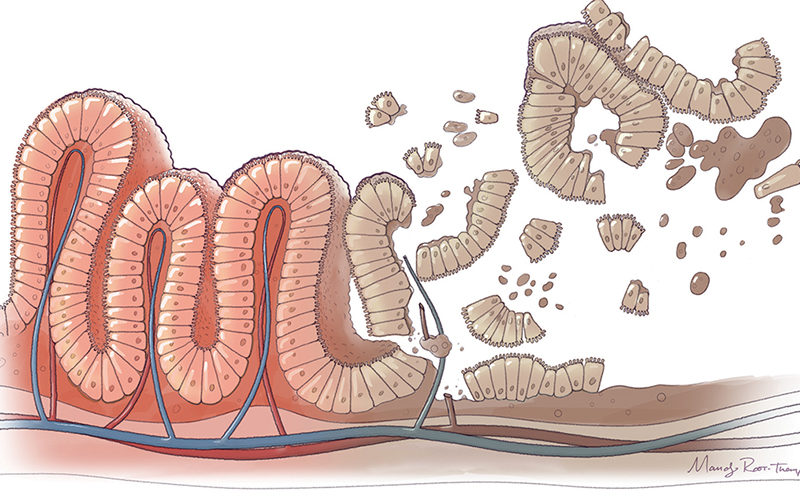Thinking Outside the (Tool) Box: How Techniques From Alzheimer’s Research Illuminate the Pathophysiology of Preeclampsia
Thinking Outside the (Tool) Box: How Techniques From Alzheimer’s Research Illuminate the Pathophysiology of Preeclampsia https://pediatricsnationwide.org/wp-content/themes/corpus/images/empty/thumbnail.jpg 150 150 Katie Brind'Amour, PhD, MS, CHES Katie Brind'Amour, PhD, MS, CHES https://pediatricsnationwide.org/wp-content/uploads/2021/03/Katie-B-portrait.gif- November 06, 2014
- Katie Brind'Amour, PhD, MS, CHES
Irina Buhimschi, MD, has a habit of getting lost. In July 2007, that poor sense of direction proved to be a fortunate flaw. Having wandered into the wrong presentation at the Protein Society’s national conference, she hovered in the back to get her bearings. Up front, a speaker discussed how misfolded proteins accumulate in the brains of Alzheimer’s patients, clogging up cellular pathways and wreaking havoc on the organ’s function. As she listened to the findings, a light went off in her head.
Two years earlier, in Dr. Buhimschi’s lab at Yale University, a frustrated laboratory researcher had shown her a smeared mass in a gel test of a urine sample from a woman with preeclampsia. The clumps of misassembled proteins were unlike anything the team or any other preeclampsia researcher had observed before — except when experiments erred. And this result was not a mistake.
As Dr. Buhimschi listened to Charles Glabe, PhD, a molecular biochemist at theUniversity of California, Irvine, talk about the misfolded proteins he’d identified in Alzheimer’s disease, she realized that the jumbled proteins of preeclampsia shared features with that seemingly unrelated condition. Protein clumps themselves were worthy of research, Dr. Glabe explained, and could actually be a cause of disease. Then he told the audience what tools he used to study them.
Dr. Buhimschi may have been lost when she entered that lecture hall, but when she left, she had found a new direction for her research on preeclampsia — and a whole new set of tools to understand a pregnancy-related condition that kills up to 75,000 women worldwide each year.
A Disease to Dye For
Preeclampsia has long baffled researchers searching for clues to its cause. Before 2007, Dr. Buhimschi was among that puzzled lot. Then a serendipitous wrong turn led her to Dr. Glabe’s talk and for the first time, that mystery started to unravel.
Alzheimer’s is one of a group of conditions known as protein conformational disorders. To function normally, proteins must take a specific shape. When they fold incorrectly, as is the case with Alzheimer’s, they accumulate, causing lesions or blocking cell pathways.
When Dr. Buhimschi realized that the misfolded proteins in her preeclamptic samples were so similar to those in Dr. Glabe’s Alzheimer’s samples, she began to wonder. What if preeclampsia caused a logjam of misfolded proteins that resulted in the condition’s symptoms? Or what if women with an existing protein folding problem were the ones to develop the condition?
“The ‘Eureka!’ moment for me was accepting that if preeclampsia is a disease of improper protein folding, there should be connections with other diseases, such as Alzheimer’s and mad cow disease,” says Dr. Buhimschi, now the director of the Center for Perinatal Research at The Research Institute at Nationwide Children’s Hospital. That also meant that she could take the tools used to study those conditions and apply them to her work.
One of those tools is Congo Red. Developed in Germany in the late 1800s as a textile dye for cotton and paper, Congo Red is renowned among biochemists for its attraction to misconfigured proteins. The dye binds to such proteins on contact, unveiling its characteristic crimson color. Dr. Glabe and others use it to identify the misfolded amyloid precursor protein (APP) that goes on to form the characteristic plaques found in the brains of Alzheimer’s patients.
Complications from preeclampsia usually occur when the condition goes undetected, a common occurrence in regions where prenatal care is scarce or nonexistent. A simple diagnostic test could save thousands of lives, but before the perplexing gel plate, scientists had made little headway in developing precise and affordable screens. Now, Dr. Buhimschi at least knew what to look for — misfolded proteins in urine.
If Congo Red stained the abnormally shaped proteins from other conditions, Dr. Buhimschi thought it might do the same for preeclampsia samples. And it did.
One Dot at a Time
Word spread quickly, and funding agencies took notice. The team received a Grand Challenges for Development award from the U.S. Agency for International Development and similar initiatives around the world, funds that allowed them to design a point-of-care diagnostic test using plain paper and inexpensive plastic pipettes pre-filled with a tiny drop of Congo Red. Created specifically for resource-poor settings, the Congo Red Dot test is now being piloted in Ohio, Bangladesh, Mexico, South Africa and elsewhere.
Although the test appears to be easily understood and readable by even unskilled health workers, a smartphone app can also be used to diagnose samples from a picture of the Congo Red dot test results — eliminating the need for a high-tech laboratory. Early diagnosis allows physicians to monitor preeclamptic patients for spikes in blood pressure, put at-risk women on bed rest and prepare for induced early delivery if necessary. Although childbirth is currently the only known remedy for preeclampsia, Dr. Buhimschi believes effective therapies may not be far off.
“Some of the drugs used for treatment of other protein conformational disorders could be great candidates for pregnant women at risk of preeclampsia,” Dr. Buhimschi says. “Drugs targeting protein aggregates that don’t pass the blood-brain barrier may not cross the placenta to the fetus, so the ideal preventive treatment or cure for preeclampsia might come from what they thought was a failed drug for Alzheimer’s.”
This open-minded approach is what has helped her interdisciplinary team progress so rapidly, Dr. Buhimschi claims, and it’s what she is hoping will help them overcome the many challenges ahead.
“None of this would have been possible without thinking outside the box,” she says. And a little getting lost.
Reference:
Buhimschi IA, Nayeri UA, Zhao G, Shook LL, et al. Protein misfolding, congophilia, oligomerization, and defective amyloid processing in preeclampsia. Science Translational Medicine. 2014 Jul 16, 6(245):245-92.
About the author
Katherine (Katie) Brind’Amour is a freelance medical and health science writer based in Pennsylvania. She has written about nearly every therapeutic area for patients, doctors and the general public. Dr. Brind’Amour specializes in health literacy and patient education. She completed her BS and MS degrees in Biology at Arizona State University and her PhD in Health Services Management and Policy at The Ohio State University. She is a Certified Health Education Specialist and is interested in health promotion via health programs and the communication of medical information.
-
Katie Brind'Amour, PhD, MS, CHEShttps://pediatricsnationwide.org/author/katie-brindamour-phd-ms-ches/April 27, 2014
-
Katie Brind'Amour, PhD, MS, CHEShttps://pediatricsnationwide.org/author/katie-brindamour-phd-ms-ches/April 27, 2014
-
Katie Brind'Amour, PhD, MS, CHEShttps://pediatricsnationwide.org/author/katie-brindamour-phd-ms-ches/April 27, 2014
-
Katie Brind'Amour, PhD, MS, CHEShttps://pediatricsnationwide.org/author/katie-brindamour-phd-ms-ches/April 28, 2014
- Post Tags:
- Center for Perinatal Research
- Posted In:
- Features







